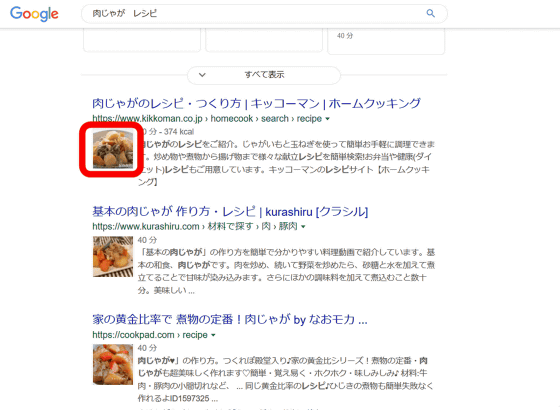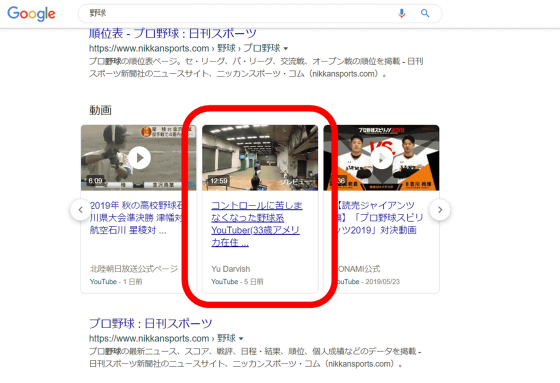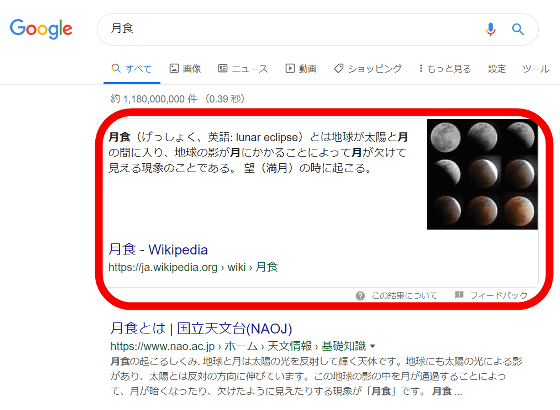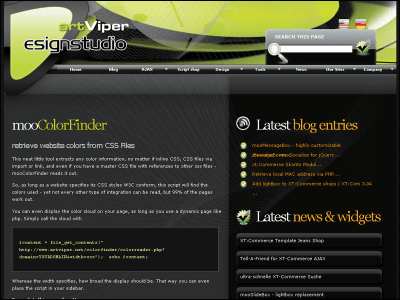Announcing a new specification that enables detailed control of explanatory text etc. displayed in Google search results

by
The search result screen of Google search not only displays the title and URL of the relevant website, but also displays text describing the contents of the website, so that the user can find the appropriate website It is useful for. A new specification has been announced for the website operator to have more control over the content displayed in Google search results.
Official Google Webmaster Central Blog: More options to help websites preview their content on Google Search
https://webmasters.googleblog.com/2019/09/more-controls-on-search.html
Google search results display a preview of the text of the content, but the content varies depending on what the user is looking for and the device they are searching for. The content of the preview that is displayed is automatically generated by Google, but Google recognizes that website operators may want to fine-tune the text and media content displayed on the search results screen. I am doing it.
Therefore, Google announced that it will add a specification for website operators that allows detailed control over the text of search results. For example, Google uses a method called “snippet” to display some of the information on your website.
In the image below, the part enclosed in a red frame is the text snippet. This makes it easier to understand what the content looks like without actually opening a website. Previously, the website operator could decide to specify the snippet contents using the
meta description tag, or to display or not display the text snippet, but with this addition, a wider range of snippet management Is now possible. 
The website operator uses the
◆ 01:
nosnippet '
nosnippet ' is a previously available option that specifies that text snippets for the specified site should not be displayed. ◆ 02:
max-snippet:[number] '
max-snippet:[number] ' is an option to specify the maximum number of characters of text to be displayed as a snippet, and it will be newly available with this addition. ◆ 03:
max-image-preview:[setting] The snippet does not always display only text, but often displays images, especially in the AMP (Accelerated Mobile Pages) format. Using the newly available '
max-image-preview:[setting] ', instead of [setting], use ' none ', ' standard ', ' large ' The maximum size of the image displayed on the search result screen can be specified. 
◆ 04: max-video-preview:[number]
“ max-video-preview:[number] ” is an option to set the maximum playback time for the preview of the movie displayed in the search results. Movies on the website may be displayed in Google search results, and users can see a 6-second preview on the search results screen. The website operator will be able to manage this preview time.

These meta tags can be combined like ' <meta name='robots' content='max-snippet:50, max-image-preview:large'> ' and are valid from mid-October to late 2019 It will be. The content that can be described using the robots meta tag can also be specified as 'X-Robots-Tag'.
It is also possible to data-nosnippet the meta tag ' data-nosnippet ' together with meta tags that specify ranges such as ' span ', ' div ', and ' section ' to specify that a specific part in the HTML page is not displayed as a snippet .
For example, ' <p><span data-nosnippet>Harry Houdini</span> is undoubtedly the most famous magician ever to live.</p> > Harry Houdini </ span> is undoubtedly the most famous magician ever to live. </ P> If fill out a', <p><span data-nosnippet> and </span> The part of “Harry Houdini” surrounded by </span> will not be displayed in the snippet.

by PhotoMIX Ltd.
Note that the “ enhanced snippet ” that is determined to be close to the information that the user is looking for in the search results does not comply with the restrictions set in the meta tag. In the image below, the highlighted snippet is surrounded by a red frame.

However, the content that Google displays in the highlight snippet conforms to the structured data that the website contains. Therefore, by limiting the structured data to give information to Google, it is possible to change the content displayed in the emphasis snippet.
Google says that the announced options will be available to publishers around the world and will work the same way for search results displayed around the world.
Related Posts:
in Web Service, Posted by log1h_ik







